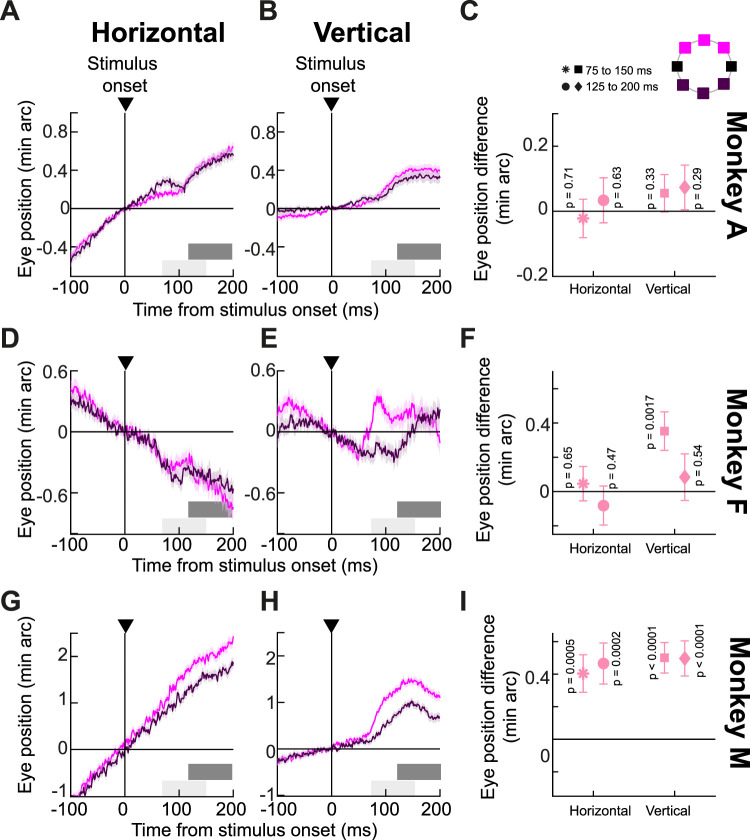Figure 6.
Spatially directed drift modulations with localized stimuli along the vertical direction. This figure is like Figure 5, except that we now grouped the trials according to whether the flashes were in the upper or lower visual field (see inset schematic in C for the color codes). All monkeys showed a vertical drift response. On top of that, the stimulus locations now modulated the vertical component of eye positions more than the horizontal component, consistent with the idea that localized stimuli can have a modulatory effect on ocular position drifts (compare the eye position traces to those in Fig. 5). Also note that the vertical position difference measurements in the later time interval did not increase relative to those in the earlier time interval. This is likely because the spatially driven modulation was riding on a drift response that was already predominantly vertical. A–C, n = 1,100 and 1,006 trials for upper and lower visual field stimulus locations, respectively. D–F, n = 303 and 312 trials for upper and lower visual field stimulus locations, respectively. G–I, n = 984 and 881 trials for upper and lower visual field stimulus locations, respectively.

